The Design Process Management course is truly multidisciplinary
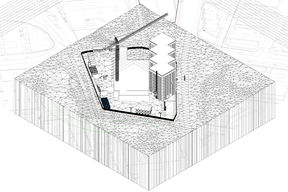
The course consists of designing and managing two different real-life construction projects in groups. One of these projects is a new parking hall designed for Helsinki Airport in the south of the T2 terminal, where an old parking hall was previously dismantled. The other is an office building designed in Järvenpää. YIT and SRV work as business partners in the project, and the design sites are real projects of these companies. Several experts from other companies and various Aalto professors also take part in the mentoring. In addition to group work, the course consists of weekly lectures, expert mentoring, and feedback meetings with the companies. Due to the corona situation, the course was organized virtually this year.
Four students shared their experiences of the course. Anniina Jokinen and Tuomas Valkonen were in different groups designing the office building in Järvenpää. Anniina Jokinen worked as an architect and lead designer in her project group. Tuomas Valkonen, on the other hand, was a HVAC designer and energy analyst. Saara Kemppainen and Jyri Liukko worked in the design projects of the airport parking hall, Saara Kemppainen as a project manager and Jyri Liukko as an architect. However, project activities were not limited to these roles, but all students have been actively involved in the management and decision-making process.
Anniina Jokinen studies architecture as her major in Aalto University, Saara Kemppainen’s major is building technology, and Jyri Liukko's is geoengineering. Tuomas Valkonen is a doctoral student at the Department of Civil Engineering, who who has graduated from the Advanced Energy Solutions Master's Programme specializing in HVAC technology. His research will focus on combining building technology design automation and pre-fabrication.
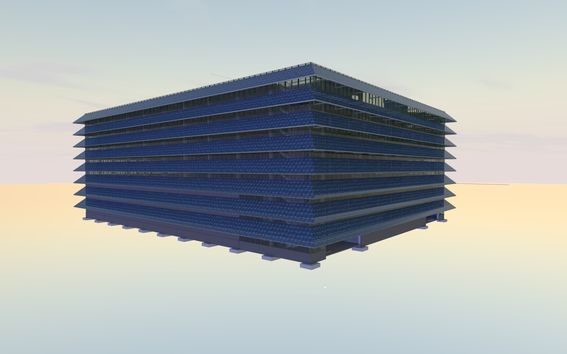
What has been your group's project work in the Design Process Management course?
Tuomas Valkonen: "My group has been designing a block construction project to be built in Järvenpää and, in particular, an office building included in the project. In the early stages of the work, the level of design is the entire scope of the project, as, for example, the composition of buildings and site operations are designed considering the entire project. As the project progresses, more detailed technical designs for the office building will be drawn up for one floor.
Jyri Liukko: "The course is divided into two locations, the first of which is the office building in Järvenpää and the second is the parking hall in Helsinki Airport. Our group works with the airport parking. The purpose of the project is to design a parking hall to the south of the new T2 terminal. One which serves the needs of customers better than the parking hall previously dismantled from the same location. “
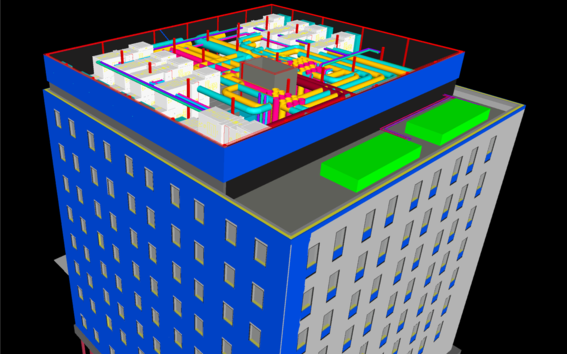
What has been the most interesting thing in the Design Process Management course?
Anniina Jokinen: "The most interesting part of the course has definitely been the multidisciplinary designer team and simulating of a real-life case. The client has offered positive challenges by changing the plans and by taking more clients into the office building during the design process. These changes have provided good extra-challenges and our entire team has enjoyed the problem-solving in a rapid time frame. “
Tuomas Valkonen: "The course has provided various beneficial tools and working methods to avoid unnecessary work, improve efficiency, and facilitate decision-making. Most of the working methods used in the course can be applied in any project work. We have discovered that the traditional working life practices and the dynamics of a project team are present, even though the division of roles does not correspond to the professions of individuals. Changing and challenging accustomed operating methods requires conscious work. “
Saara Kemppainen: "I was given the responsibility of a project management, which is something you rarely get to experience at this stage of your career. The challenges of design coordination cannot be fully understood from the lecture slides alone, but in this course, we created a designer team by ourselves, which also created problems and we got to solve them. For example, the change in the number and quality of parking spaces from the client affected everything from design to procurement and site design as a domino effect. This really got us outside our own study bubble, and the work was very alliance-like. “
Jyri Liukko: "The most interesting, but also the most laborious aspect, has been working on the data model. I do not have previous design experience or background in working life. I have used AutoCAD in the past only in a two-dimensional level, rather than in a three-dimensional space. AutoCAD, per se, is familiar to me. I remember using it for the first time on Windows 95 or NT platform at the turn of the millennium or even earlier, when I was under 15 years old. I expected, however, that the course would be more focused on managing the design process as a whole, while the majority of the work now is related to designing and working as a designer. Although, the designer's side must also be understood, for me as a production-oriented person, design management at the project level means that I am the person who manages the design and the designers. “
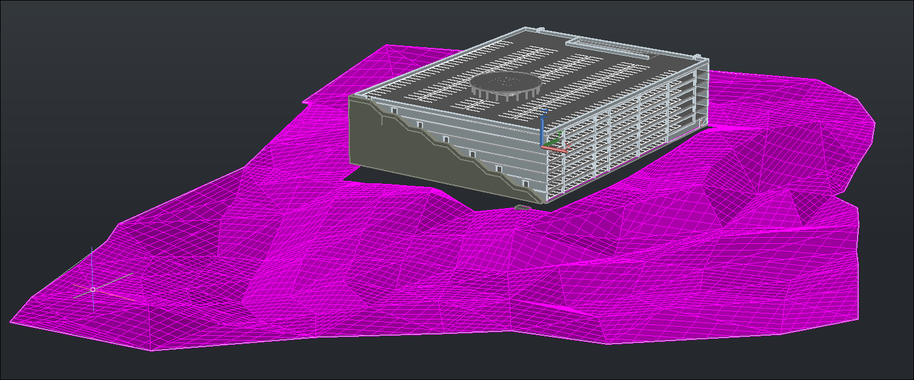
What have you learned in the course?
Anniina Jokinen: "Participation in the course was a quick decision for me to dive into my discomfort zone of civil engineering and schedules. The multidisciplinary designer team has generously shared their views and ideas, through which our entire group has been able to broaden its know-how comprehensively. Cooperation between a structural designer, an architect, and a designer of site operations has helped to perceive the constructiveness of a whole, which can produce major savings. For me, the most important lesson of the course is the importance of cooperation. Throughout the course, our group has had a really positive can-do spirit. We have not been shy to ask questions, and every member of the group has taken the time to answer questions without any ambiguity. I have learned a great deal from the engineers in my group, about structures, costs, building technology, data models, and work site activities, as well as terminology, which I have just pretended to understand before this course.“
Saara Kemppainen: "I have learned many things, practical matters, such as drawing Choosing by Advantages or CBA charts, compiling a procurement package, and leading good meetings. In addition, I have learned how a project manager should be on top of everything, although efficient process design is fortunately reducing this need. I now understand the design process much more profoundly than before.“
Jyri Liukko: "I have learned 3D modelling. In addition, I have gained more understanding on the design stages, and how laborious it ultimately is, to get all the requirements of the set boundary conditions to work within the framework of a single project."

How has the course's company cooperation been like?
Tuomas Valkonen: "Company cooperation has been central to the implementation of the course. The design sites are real projects of two construction companies, and the persons representing the client are well familiar with the projects. We have presented our progress to the representatives of the companies weekly and received comments on our work. The course has been instructive for both parties, and the companies have been extremely interested in the utilised methods and tools from the perspective of developing their own activities. In addition, the companies have played an important role in mentoring the project groups. During weekly mentoring meetings, experienced experts of various fields have provided their views to support designing. Mentoring is central in the course, as the students do not necessarily represent their own key competence areas.“
Saara Kemppainen: "I have been surprised and delighted that so many different experts have been mentoring us, and that SRV and YIT have spent so much of their time and expertise on this course. It is priceless when you want to understand working life beyond theory. Linking working life to the course also increases motivation for good performances!“
Jyri Liukko: "As for me, my participation in the cooperation was slightly poor, but I would have wished for more initial data from the companies as a starting point for the designing, for instance. “
Anniina Jokinen: "Throughout the course we were in contact with our client YIT via Teams, where we presented our process and design solutions as a group and were able to ask questions. Student specific mentoring by companies in different fields was also organised weekly. In the field of architecture, high-quality mentoring was offered by Eero Lunden, with whom we assessed the problems encountered in the design process. Other members of my group have also been very satisfied with the quality of the mentoring sessions.“
Students with different backgrounds will continue to be invited to participate in the course, as the design and management of multidisciplinary projects requires a variety of expertise. Saara Kemppainen mentions at the end of the interview: "This year, the course has still been incomplete in some respects, but if other fields of study become more involved in the next few years, this will truly be a multidisciplinary course - one that a top university like Aalto University should have. So welcome other fields! The teachers have really worked hard with all the arrangements.“
More information about the course:
Professor Olli Seppänen
[email protected]
- Published:
- Updated:
Read more news

Online AI course could boost study equality
Students at the School of Business believe that mastering Artificial Intelligence (AI) can be beneficial for both academic success and career prospects, as AI becomes increasingly integrated into daily life.
2 027 new students admitted to Aalto University’s Finnish, Swedish bachelor’s programmes
13 500 applied to Aalto University in Finland's spring joint application in 2024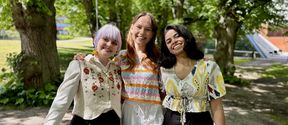
Meet the the Program Assistants that elevate the Aalto University Summer School experience for 250 students from all over the world
Each year, the Aalto University Summer School has grown its operations and course curriculum tremendously.